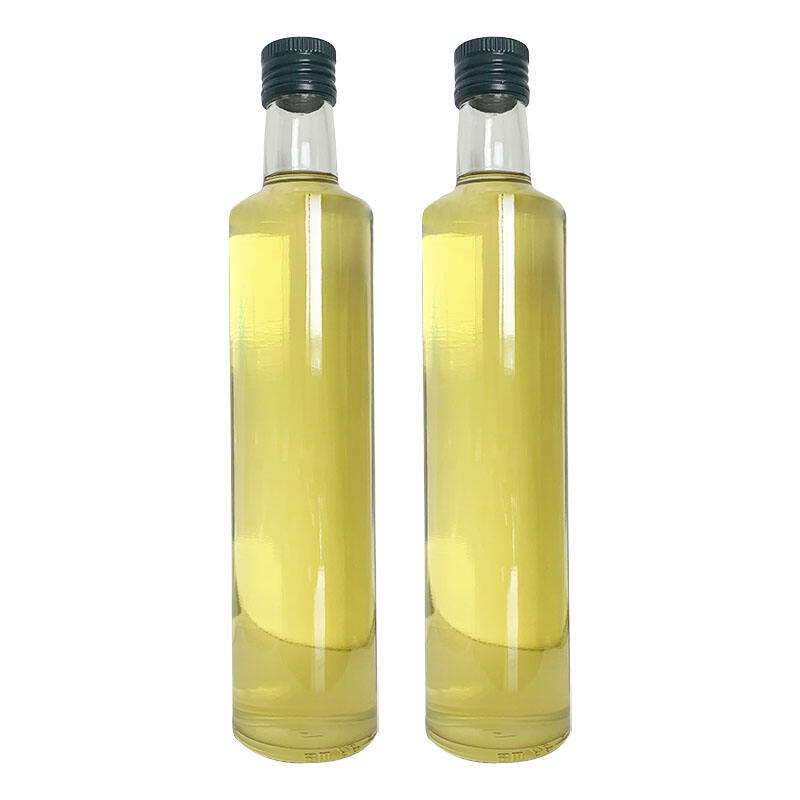Unlocking the Rich Flavors of Asian Cuisine with Liquid Gold
Sesame oil stands as one of the most treasured ingredients in Asian cooking, particularly renowned for its ability to transform ordinary soups and stews into extraordinary culinary experiences. This aromatic oil, extracted from toasted sesame seeds, brings a distinctive nutty flavor and deep amber color that has enhanced dishes for thousands of years. Its unique properties make it an indispensable element in creating authentic Asian flavors, while also offering versatility that extends far beyond traditional applications.
From the steaming bowls of ramen in Japan to the hearty Korean stews and delicate Chinese broths, sesame oil serves as more than just a cooking medium – it's a flavor enhancer that adds depth, complexity, and warmth to every dish it touches. Understanding how to properly use this powerful ingredient can elevate your home cooking to restaurant-quality levels.
The Science Behind Sesame Oil's Flavor Enhancement
Chemical Composition and Aroma Compounds
The distinctive taste-enhancing properties of sesame oil can be attributed to its unique chemical makeup. Rich in natural compounds called lignans and tocopherols, sesame oil contains volatile organic compounds that create its characteristic aroma. These compounds interact with other ingredients in soups and stews, creating new flavor combinations that weren't present in the individual components.
The oil's high concentration of antioxidants not only contributes to its stability but also helps preserve and enhance the flavors of other ingredients in the dish. When sesame oil meets hot liquid, its aromatic compounds become more volatile, releasing their full potential and infusing the entire dish with their distinct character.
Temperature and Timing Considerations
The timing of when sesame oil is added to soups and stews significantly impacts its flavor contribution. While many oils are primarily used for cooking, sesame oil often performs best when added towards the end of the cooking process or as a finishing oil. This technique preserves its delicate flavors and prevents the oil from becoming bitter through prolonged exposure to heat.
When added at the right moment, usually just before serving or in the final minutes of cooking, sesame oil creates an aromatic steam that rises from the dish, engaging both the sense of smell and taste. This dual-sensory experience is what makes dishes finished with sesame oil so memorable and satisfying.
Essential Techniques for Incorporating Sesame Oil
Layering Methods for Maximum Impact
To achieve the most profound flavor enhancement, professional chefs often employ a layering technique with sesame oil. This involves using a small amount during the initial cooking process to build a flavor foundation, then adding another light drizzle just before serving. This method ensures that the oil's complex flavors are present throughout the dish while maintaining its aromatic freshness.
The layering technique works particularly well in longer-cooking dishes like stews, where the initial addition melds with other ingredients while the finishing touch provides that distinctive sesame aroma that makes the dish instantly recognizable.
Quantity Control and Balance
The potency of sesame oil requires a delicate touch when it comes to quantity. Too much can overwhelm other flavors, while too little might not achieve the desired effect. As a general rule, start with a small amount – about half a teaspoon per serving for soups and stews – and adjust according to taste. The goal is to enhance, not dominate, the overall flavor profile of the dish.
Balance is crucial when working with sesame oil. Its robust nature pairs well with equally strong flavors like ginger, garlic, and chili, but it can also complement more subtle ingredients like mushrooms and leafy greens. The key is finding the right proportion that allows all ingredients to shine while creating a harmonious whole.

Regional Variations and Applications
East Asian Soup Traditions
Different regions across East Asia have developed unique approaches to using sesame oil in their soup preparations. Japanese cooking often employs it sparingly in clear broths, where its subtle presence adds depth without clouding the soup's transparency. Chinese cuisine might use it more generously in robust broths, particularly in noodle soups where it helps to bind flavors together.
Korean cuisine takes perhaps the boldest approach, using sesame oil as a fundamental flavor in many of its stews and soups. It's often combined with gochugaru (Korean red pepper flakes) and doenjang (fermented soybean paste) to create the characteristic taste of Korean comfort food.
Modern Fusion Applications
Contemporary chefs have begun exploring new ways to incorporate sesame oil's unique properties into non-traditional contexts. Western-style cream soups can benefit from a light drizzle of sesame oil, adding an unexpected depth that complements the creamy texture. Vegetable-based stews gain a meat-like satisfaction from its rich, umami qualities.
These modern applications demonstrate sesame oil's versatility beyond its traditional Asian roots, showing how this ancient ingredient continues to evolve and find new expressions in global cuisine.
Storage and Quality Considerations
Maintaining Optimal Flavor
The flavor-enhancing properties of sesame oil are best preserved through proper storage. Keep the oil in a dark, cool place away from direct sunlight and heat sources. While it has a relatively long shelf life compared to other oils, its intense flavors can deteriorate over time, particularly if exposed to air and light.
Quality sesame oil should have a rich, nutty aroma and a clean taste without any rancid notes. Premium varieties often have a darker color and more concentrated flavor, requiring less quantity to achieve the desired taste enhancement in soups and stews.
Selection and Quality Indicators
When selecting sesame oil for soup and stew preparation, look for products specifically labeled as toasted or roasted sesame oil, as these varieties offer the most intense flavor-enhancing properties. The oil should be stored in dark glass bottles or opaque containers to protect it from light degradation.
The best sesame oils will have a strong, clean aroma right out of the bottle and should feel smooth, not sticky, when rubbed between your fingers. Premium brands often cost more but provide better flavor enhancement and require less quantity to achieve the desired effect.
Frequently Asked Questions
What makes toasted sesame oil different from regular sesame oil?
Toasted sesame oil is made from roasted sesame seeds, giving it a darker color and more intense, nutty flavor compared to regular sesame oil, which is pressed from raw seeds. The toasting process creates additional flavor compounds that make it particularly effective for enhancing soups and stews.
Can sesame oil be used for high-heat cooking in soups and stews?
While sesame oil can withstand moderate heat, it's best used as a finishing oil or added towards the end of cooking to preserve its delicate flavors. For high-heat cooking, use a neutral oil for the base and add sesame oil later for flavor enhancement.
How long does sesame oil maintain its flavor-enhancing properties?
When properly stored in a cool, dark place, sesame oil typically maintains its optimal flavor-enhancing properties for up to six months after opening. Unopened bottles can last up to a year, but always check for any off-odors or rancid smells before use.

 EN
EN
 DA
DA
 AR
AR
 NL
NL
 FI
FI
 FR
FR
 DE
DE
 EL
EL
 HI
HI
 IT
IT
 JA
JA
 KO
KO
 NO
NO
 PL
PL
 PT
PT
 RU
RU
 ES
ES
 SV
SV
 TL
TL
 ID
ID
 SR
SR
 UK
UK
 VI
VI
 HU
HU
 TH
TH
 TR
TR
 FA
FA
 AF
AF
 MS
MS
 GA
GA
 MK
MK
 HY
HY
 KA
KA
 BN
BN
 LA
LA
 MN
MN
 NE
NE
 MY
MY
 KK
KK
 UZ
UZ
